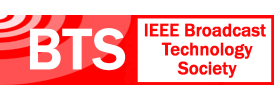- About
- Members
- Sponsors
- Subcommittees
- Technical Documents
- News
- Events
- Spotlight ATSC 3.0
- Contact Us
- Member Login
- Member Meetings
- Advanced Search
Search Site
Member Links
- About
- Members
- Sponsors
- Subcommittees
- Technical Documents
- News
- Events
- Spotlight ATSC 3.0
- Contact Us
- Member Login
- Member Meetings
- Advanced Search
ATSC 3.0 ‘Transition Scenarios’ Being Explored
Posted on November 4, 2014 in ATSC News
ATSC 3.0 ‘Transition Scenarios’ Being Explored
In parallel with the development work on the ATSC 3.0 standard, an ad hoc group of the ATSC Board of Directors is exploring the technical possibilities for “Transition Scenarios.” Members are looking at various possibilities for how broadcasters and consumers might migrate from the ATSC 1.0 digital television standard adopted in 1996 to the next-generation ATSC 3.0 standard when it’s fully implemented later this decade.
Led by ATSC Board member Sam Matheny (complementing his new role as CTO of the National Association of Broadcasters), this group is focused on a goal of informing broadcasters, manufacturers and other stakeholders about the technical transition possibilities offered by ATSC 3.0. The group is taking into consideration a number of factors, including:
– Broadcast services that can be delivered to various types of devices,
– Audience impact,
– Spectrum availability,
– Potential for interference,
– Transition duration, and
– How the transition will mesh with other industry activities.
The group started by discussing use cases for delivering new services, such as mobile HD services and 4K Ultra HD, as soon as possible while maintaining the existing business model of over-the-air and retransmission to pay-TV homes. With that in mind, the group is looking at possible tradeoffs and ways to facilitate simulcasting of ATSC 1.0 and ATSC 3.0.
Thanks to the combination of ATSC 3.0’s advanced compression CODECs and the flexibility of its physical layer transmission to operate at different combinations of bit rate and transmission robustness, a variety of simulcast possibilities exist.
These include low-power simulcasting in channel assignments that are unusable for ATSC 1.0 and/or temporary channel-sharing approaches among local TV stations during a transition period. Also under the microscope at this early stage are cloud-based approaches building on ATSC 3.0’s IP foundation.
Posted in ATSC News
News Categories
News Archives
Subscribe
Subscribe to The Standard, our monthly newsletter. Learn More
Join ATSC
ATSC is a membership organization with both voting and observer categories. Voting members include corporations, nonprofit organizations, and government entities, and they participate actively in the work of ATSC. Observers are individuals or entities not eligible to be a voting member.
Subscribe to our Newsletter
Subscribe to The Standard, our monthly newsletter, to stay up-to-date with ATSC news and events around the world.
Site Links
Contact Us
ATSC
1300 I Street NW, Suite 400E
Washington, DC 20005 USA
Do you have questions about ATSC?
About ATSC
ATSC, the Broadcast Standards Association, is an international, non-profit organization developing voluntary standards and recommended practices for digital terrestrial broadcasting. Serving as an essential force in the broadcasting industry, ATSC guides the seamless integration of broadcast and telecom standards to drive the industry forward. Currently, the ATSC 3.0 Standard is providing the best possible solution for expanding the potential of the broadcast spectrum beyond its traditional application to meet changing needs. From conventional television to innovative digital data services, ATSC has one clear goal: to empower the broadcasting ecosystem like never before.
© 2025 ATSC





































